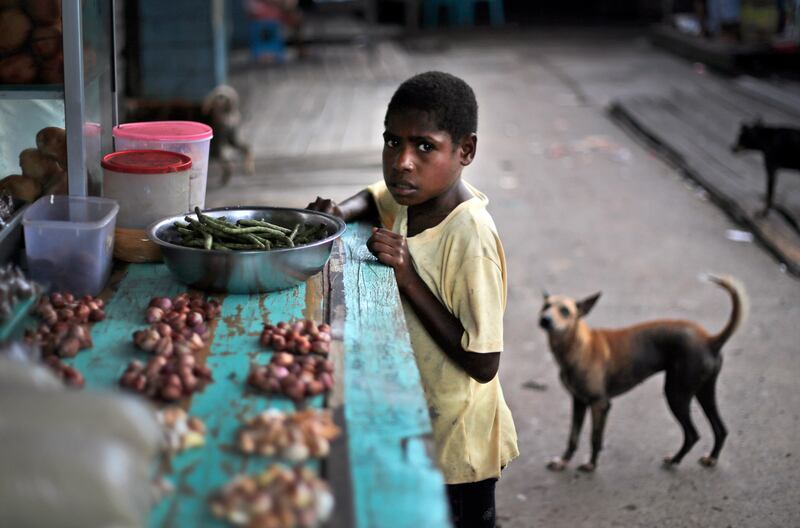Indonesia’s leader ordered the military Monday to escort food deliveries into the rebellious Papua region, where thousands face starvation amid extreme weather conditions that have led to severe food shortages.
President Joko “Jokowi” Widodo said the separatist conflict had hampered efforts to send food aid to affected areas in Papua, where officials said at least six people had died of hunger since June.
The El Niño climate pattern, which began to impact the country in June, is said to have similarly caused severe drought and frost in parts of Papua and neighboring Papua New Guinea back in 2015.
“Plants do not grow during the cold spell there. Food aid has also been hampered by security problems and planes are afraid to land,” Jokowi told reporters, referring to the separatist violence that has risen in the past few years, displacing thousands of people in Papua, Indonesia’s easternmost region.
“I have asked the TNI [Indonesian Armed Forces] to escort food deliveries,” he added.
El Niño, which warms the surface waters of the eastern Pacific Ocean and alters global climate patterns, started in June and is likely to last until February 2024, according to a report last week by ACAPS, a humanitarian analysis group.
El Niño could also interact with other factors leading to unpredictable and potentially more extreme outcomes, ACAPS said.
Severe frost followed by drought in the mountainous Puncak regency – the worst-affected area in Central Papua that Jokowi was referring to – is an example of extreme weather outcomes caused by El Niño, as was also seen during the phenomenon in 2015.
What happens is the warmed Pacific waters appear to cause a reduction in cloud cover, which in the Papuan highlands leads to faster cooling of the land overnight, according to the United Nations Environment Program.
This in turn causes more severe frost, a higher number of frost days and frost even at lower altitudes – thus killing crops.
At the same time, less cloud cover also causes less rainfall, in turn bringing about drought and impairing harvests.

Central Papua’s disaster management agency said the drought had affected about 7,500 people in Puncak, which is more than 9,800 feet above sea level and prone to frost.
Suharyanto, the head of the National Disaster Management Agency (BNPB), described how the famine came about.
“The cold spell caused hail that killed local people’s corn crops. Several thousand Papuans in Central Papua are facing starvation, and six have died,” Suharyanto, who goes by one name, said in a statement.
He said aid would immediately be sent to Puncak, with emergency response measures including distribution of food and medicine, and health education. He also said his agency would try to ensure water availability and prevent forest fires by working with other agencies to conduct weather modification operations.
“These operations aim to induce rain to fill lakes, reservoirs, rivers, and wells, and to make new wells so that water can be used by communities,” he said.
El Niño, expected to peak between August and September, won’t affect all areas of the country in the same manner, said Dwikorita Karnawati, the head of the National Meteorological, Climatological and Geophysical Agency, at an online forum on Monday.
“There’s a possibility of one region facing drought while a neighboring area suffers floods or other hydrometeorological disasters. In other words, not all regions will experience dry conditions,” Dwikorita said.
Such unpredictable weather conditions will impact groundwater, irrigation and agriculture, raising the specter of food insecurity and inflation in Indonesia.
Arief Prasetyo Adi, the head of the National Food Agency, said at the online forum that food price stability and availability would be key to keeping inflation under control in the face of El Niño.
He said Jokowi had ordered food reserves to increase by more than 1 million tons to cope with a potential food crisis.
“The stock of priority food is safe through 2023. The State Logistics Agency has been tasked with storing 2.4 million tons of rice this year, up from 900,000 tons last year,” Arief said.
“We urge the public to shop wisely and buy only what they need.”
